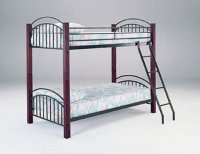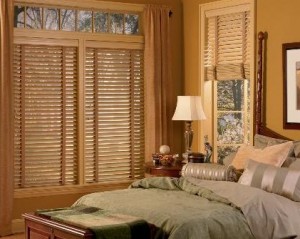Modern Bedroom Sizes, Futons and Bunk beds.
Sunday, January 4th, 2009The natural focal point of the bedroom is the bed itself; this means the selection of the bed is important in establishing the overall design of a bedroom, particularly if the frame is unusually interesting. The variety of bed styles available ranges from a simple futon mat, to a traditional box spring and mattress, to a waveless waterbed, with variations and alternatives in between.
In the United States, standard sizes were established in the 1950s for bed frames and mattresses: King, 72″ x 84″; Queen, 60″ x 75″; double or full, 54″ x 52″; and single or twin, 39″ x 75″. Unless your bed is older than this, it will be one of these universal sizes, regardless of the type of bed frame. And although the sizes of American beds and bedding were standardized in the 1950s, the closest-to-standard sizes in pillows include: king, 26″ x 36″; queen, 26″ x 30″ and standard, 20″ x 26″. Other pillow sizes include French continental or eurosquare, 26″ x 26″ and the Russian pillow, 14″ x 14″.
Futons are ideal for studios and small spaces, as are Murphy beds. First introduced in 1905, the Murphy bed folds into a closet to open up more floor space when not in use. Some are hinged at the head and some hinge at the side.
 Bunk beds and trundle bed styles are space-saving alternatives to an extra bed in the guest room. Bunk beds are stacked on top of one another, while trundle beds have a second bed that slides out from underneath the first bed. Bunk beds are primarily found in children’s rooms.
Bunk beds and trundle bed styles are space-saving alternatives to an extra bed in the guest room. Bunk beds are stacked on top of one another, while trundle beds have a second bed that slides out from underneath the first bed. Bunk beds are primarily found in children’s rooms.

 Blinds, shades and shutters are also window treatment options for a bedroom. Blinds come in vertical and horizontal styles and an array of colors, sizes and materials. Louvered blinds can be opened or closed to let in light as desired.
Blinds, shades and shutters are also window treatment options for a bedroom. Blinds come in vertical and horizontal styles and an array of colors, sizes and materials. Louvered blinds can be opened or closed to let in light as desired. Pillow covers, shams and cases add a decorative flair to a bed. They can create a look that’s trimmed and tailored, or fluffy and frilly. Bedspreads, quilts and duvets, or comforters, dress a bed in very different ways. Specialty sheets, such as satin or flannel, can be found in the linen departments. Sheets for specially shaped beds, such as round or heart-shaped, can be custom-ordered.
Pillow covers, shams and cases add a decorative flair to a bed. They can create a look that’s trimmed and tailored, or fluffy and frilly. Bedspreads, quilts and duvets, or comforters, dress a bed in very different ways. Specialty sheets, such as satin or flannel, can be found in the linen departments. Sheets for specially shaped beds, such as round or heart-shaped, can be custom-ordered. Many bedding collections feature sheets, bedspreads, duvet or comforter covers, bed skirts and pillows in all types of coordinating patterns, solids, stripes or plaids. Matching fabrics for window blinds, valances, bed skirts, canopies, pillow cases and cushions, as well as wallpapers and borders, are also available. These coordinating accessories make it possible to give your modern bedroom a whole new look without spending a lot.
Many bedding collections feature sheets, bedspreads, duvet or comforter covers, bed skirts and pillows in all types of coordinating patterns, solids, stripes or plaids. Matching fabrics for window blinds, valances, bed skirts, canopies, pillow cases and cushions, as well as wallpapers and borders, are also available. These coordinating accessories make it possible to give your modern bedroom a whole new look without spending a lot. For an average, say 4×3 metre (12 X 10 ft) room that has no existing cupboards, either build in a full-length double cupboard, floor to ceiling, or buy a sturdy, roomy second-hand wardrobe. It really is
For an average, say 4×3 metre (12 X 10 ft) room that has no existing cupboards, either build in a full-length double cupboard, floor to ceiling, or buy a sturdy, roomy second-hand wardrobe. It really is